SCHRACK Light ribbon-/hose/-strip
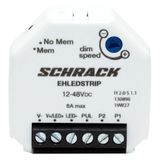
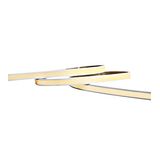
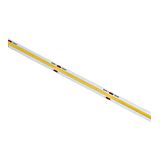
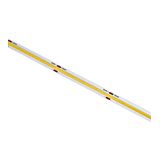
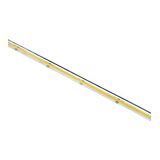

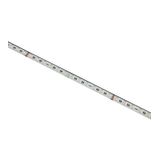
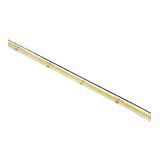
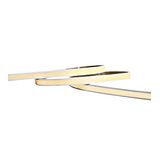
schrack light ribbon hose strip specifications for projects
Use this range when you need predictable lm/m, clean dimming, and quick installs along shelves, coves, and counters. Constant-voltage 24 V DC is the workhorse (12 V for legacy), with typical power classes 4.8 / 9.6 / 14.4 / 19.2 / 24 W per metre. Output spans ~300–2 200 lm/m depending on efficacy and CCT. Binning is kept tight (SDCM ≤ 3), CRI ≥ 80 standard with CRI 90 options for retail and healthcare. Cut lengths: 25–50–100 mm by tape family; max single feed 5–10 m before voltage drop dictates re-feed. Tape widths 5/8/10/12 mm, copper ≥ 2 oz on performance lines to hold brightness over distance.
schrack led ribbon hose constructions, optics, and IP ratings
Single-row mid-power for general runs; dense mid-power (≤180 LED/m) for uniform diffused lines; high-power for punch; RGB/RGBW/Tunable-White for scenes. Optics: bare for hidden coves, silicone encapsulation for wipe-down, and extruded diffusers in profiles to kill dotting in sightlines. Ingress classes from IP20 (dry ceilings) up to IP65 resin-coated and IP67/68 extruded sleeves for wash-adjacent corridors and wet zones. IK data on sleeve families helps in public areas.
schrack flexible lighting strip electrical and control integration
Drivers: SELV 24 V CV units with PF ≥ 0.95 and THD ≤ 10–15 % on pro ranges. Interfaces: on/off, 1–10 V, DALI-2 DT6 (white), DT8 (TW/RGBW), and PWM dimmers for short runs. Ripple-controlled outputs keep flicker down for cameras. Surge coordination: luminaire-level SPD sized to the board SPD so diode strings aren’t overstressed. For long home-runs, calculate drop (ΔV = 2·L·I·R) and upsize to 2.5–4 mm², or feed from both ends.
schrack led strip hose thermal design and lifetime
Tape Tc points are marked; mount to aluminum profiles for ≥14 W/m classes to keep Tc < 75–85 °C. Light engines reference LM-80 with TM-21 projections; expect L80/B10 35–60k h when Tc is respected. Profiles double as heatsinks and luminance control—opals, micro-prisms, and deep channels meet low-glare briefs without resorting to over-spacing.
Product range and mounting hardware engineers actually use
- Surface, recessed, and corner profiles (anodized Al) with opal/clear/micro-prism lenses; clip-in or screw-fixed carriers.
- Continuous “neon-like” extrusions for graphic lines around columns and façades (tight bend radius in one plane).
- Feed kits: centre/end feeds, plug-and-play jumpers, and polarity-keyed connectors for fast service swaps.
- Emergency options: maintained strips paired with CB systems or local EM drivers where codes require.
Compliance: IEC/EN 62031 (LED modules), IEC/EN 61347-1/-2-13 (drivers), EN 60529 (IP), EN 55015 / EN 61547 (EMC), photobiological EN 62471 (RG0/RG1).
Applications and layout logic with Schrack strips
Coves and bulkheads: uniform ambient at 200–400 lx using mid-power with opal profiles. Shelving and counters: narrow optics or deep profiles to lift vertical illuminance without glare. Wayfinding: low-level lines along skirtings on emergency-backed circuits. Hospitality: warm CCT with dim-to-warm in dining zones; RGBW accents for brand colour. For organic outlines and signage, planners note schrack flexible light hose to communicate one-piece extrusions rather than tape-in-profile builds.
Controls, DALI-2 DT8, and scene logic in Schrack ecosystems
Tunable-White (2700–6500 K) uses two channels (warm/cool) under DT8; RGBW uses four channels or a DT8 colour engine depending on gateway. Scenes and daylight hold live in room controllers; publish energy and fault codes via BMS. Map corridor function for after-hours baseloads and use time-of-day CCT shifts in multi-use rooms.
Installation practices that prevent callbacks (Schrack method)
Dry-fit profiles, then clean and prime substrates; only then apply tape (3M VHB class). Avoid tight S-curves; respect minimum bend radius and never bend across LED pads. Re-feed every 5 m (10 m on heavy copper) or run parallel feeds; label feed direction. In wet zones, heat-shrink and pot ends; use IP-rated glands and avoid capillary paths. Document polarity and segment lengths on drawings so crews don’t free-hand.
B2B selection criteria for engineers and buyers, Schrack strips
- Lux & optics: lm/m vs profile lens; avoid dotting in sightlines.
- Colour policy: CCT/CRI and SDCM ≤ 3 across rooms; TW where ambience changes by schedule.
- Power path: watt/m × length → driver size with ≥20 % headroom; distribute drivers to limit cable losses.
- Environment: IP/IK vs zone; chemical compatibility on lenses; UV stability for atria.
- Service model: field-replaceable segments, keyed jumpers, spare diffusers/drivers, identical profile families across floors.
- Compliance: EMC, SELV routing, and emergency feed rules per local code.
Procurement and kitting for rollouts with Schrack part codes
Fix a per-space kit: tape (lm/m, CCT/CRI), profile (type + diffuser), feeds/jumpers, drivers (interface), mounting clips, end caps, glands, and labels. Pre-cut profile lengths and bag by room tag to cut ceiling minutes. Stock 5–10 % spare diffusers and one driver per interface tier. In BOM notes, add “use schrack decorative led ribbons at front-of-house only—back-of-house stays on CRI-80 utility line.”
Commissioning and QA workflow, Schrack lighting teams
Burn-in at 100 % for 30–60 minutes; record Tc and driver case temps. Measure aisle/counter verticals, not just horizontals. Check PWM dimming at low levels for shimmer on cameras. Store driver addresses/scene maps with the as-builts. Where mixed feeders exist, verify SPD coordination and RCD selectivity before hand-over.
Accessories and spares, Schrack field logistics
Corner/cover trims, joiners, adjustable hang kits for suspended lines, and service jumpers belong in the site kit. For profiles near food prep or cleanrooms, choose sealed lenses and stainless screws. Keep a dedicated line in the schedule for schrack lighting accessories strip so stores don’t substitute third-party parts that break the mechanical language.
Advantages of working with Bankoflamps
We align pricing to your room schedules and strip layouts, show live EU stock, and turn quotes fast—usually around an hour. Ordering by EAN/MPN prevents variant drift; your portal tracks lead times, shipments, and downloadable price lists. Approved partners can use post-payment up to 30 days. We consolidate partials to cut freight and keep price-validity windows stable across phases. Your account manager cross-checks lm/m, profile compatibility, IP/IK, driver interface, feed topology, and emergency notes—so cartons land complete and site-ready.